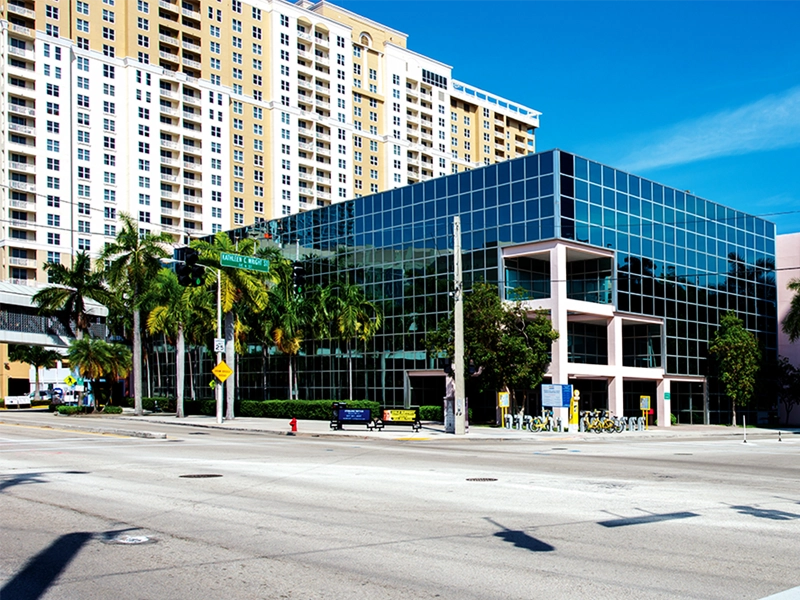Introduction
The development of K-12 schools in modern times needs to be approached with an eye for providing spaces that bring health, wellness, and sustainability to the forefront. As schools are dealing with increased energy prices and the promotion of green building practices, HVAC systems that are energy-efficient have turned out to be vital to the K-12 facilities design. Besides being sustainable and comfortable for students, these modern HVAC systems have many benefits for school environments. In this article, we’ll explore the top 10 benefits of incorporating energy-efficient HVAC systems into K-12 design.
1. Reduced Energy Costs
Among the primary advantages of energy-efficient HVAC systems is their potential to significantly drop energy costs. Through the use of state-of-the-art technology, such systems reduce waste and very effectively use energy which, in turn, means lower utility bills. For schools that sometimes barely make it through, this expense reduction, saving energy funds, can be reused through the school system for educational programs and technology.
Example: A number of school districts have published energy savings of approximately 20% annually after switching to high-efficiency HVAC systems. Thus, these savings are used for educational improvements and resources.
2. Improved Indoor Air Quality (IAQ)
Indoor air quality (IAQ) is an important topic in K-12 settings where students and teachers spend several hours each day. HVAC systems that come with energy-efficient HVAC have high-grade filtration and ventilation options that cut down appropriately and effectively, the pollutants, allergens, and pathogens. A well-kept indoor environment reduces the number of respiratory problems and further, heightens the population wisdom, with the absence of students and staff at schools becoming a myth.
Case Study: Evidence from Salas O’Brien, schools that deployed energy-efficient HVAC solutions showed a substantial decline in airborne contaminants, which subsequently enhanced student/health and performance.
3. Enhanced Thermal Comfort for Learning
Energy-efficient HVAC systems ensure that the indoor temperature remains stable and pleasant, which is a factor in creating a great place to learn. Through temperature regulation, students and teachers will not as likely feel uncomfortable while they are learning. This can result in students staying on task and making higher grades.
Example: Schools using Building Management Systems (BMS) can set their HVAC to meet the specific classroom needs – thus enabling more flexible comfort management throughout the day.

4. Support for Sustainability Goals and LEED Certification
Utilization of energy-efficient HVAC systems is not contrary to but chimes in with, sustainability goals and defines one of the roads a school can venture out of to participate in LEED (Leadership in Energy and Environmental Design) certification. LEED-certified schools are appreciated for their decisive endorsement of sustainable practices which subsequently increases their public acceptance and motivates endorsement from stakeholders committed to environmental protection.
Quote from an Industry Expert: “Schools that make investments in energy-efficient HVAC systems, as a result, send a strong message of their commitment to sustainability, which has gained increasing attention from schools that prioritize future readiness,” an expert from Multifamily Executive.
5. Increased Equipment Lifespan
Energy-efficient HVAC systems usually operate more efficiently due to being comprised of materials and components of higher quality, which often accounts for that non-energy-converter design. This is the thing that not only lessens energy usage but also benefits electronics by making them live longer. Not purchasing new systems repeatedly at high costs, educational institutions can benefit from such mechanisms and thus these systems turn out to be a clever inflexible end long-term investment.
Example: Not uncommonly, adaptive reuse projects in school design incorporate energy-efficient HVAC systems within the pre-existing structures which operate this way; lengthening the buildings’ lifespan as well as greenspace management initiatives.
6. Integration with Smart Classroom Technology
The incorporation of intelligence into the system in classrooms has shifted to a dominant tendency in K-12 configuration, and modern HVAC systems are no different than that. Among them, several systems remain energy-efficient and can be linked to intelligent building technology which improves the monitoring of the whole system, predictive maintenance, and climate control. As a result, a comfortable room that is capable of adjusting in real time to every student’s environment will be provided.
Example: Smart class technology makes it convenient for teachers to control the HVAC settings via a centralized device which in turn ensures that the season is aligned with the class schedule and other activities occur, thus enhancing a better learning experience.
7. EV Charging Compatibility for Green Transportation
Energy-efficient HVAC systems have no small role in contributing to air quality and reduced carbon emissions, as they oftentimes supplement larger environmental-friendly interventions; one area is when they provide electric vehicle (EV) charging, thus staff and visitors would have an extra option to drive them clean. This action decreases the school’s carbon emissions but at the same time, it is a way of inspiring the employees and students to choose green modes of transport.
Example: The colleges that install the charging stations of EVs in the parking lots power them with a power source made of energy-efficient HVAC designs, and thus introduce new ways to environment improvement and sustainability programs that would make green-conscious families more eco-friendly and willing to live there.
8. Data-Driven Energy Management with BMS
The Building Management Systems are one the most important parts of the HVAC concepts which save energy during the whole building operation. BMS systems give real-time information on energy use and through that channel schools are able to identify and implement suggestions that improve energy efficiency. This direct approach to energy use management ensures that campuses can follow and cut down energy usage successfully.
Case Study: A K-12 school which installed the BMS with its HVAC system renovation managed to cut down its energy usage by over 15% in the first year, which proves that they benefited from the energy management based on data analysis.
9. Enhanced Focus on Health & Wellness
HVAC systems, which are concerned with health and wellness, powerfully combine environmental efficiency with air quality and temperature stability, thus water these things are the benefits. By keeping contaminants…smog allergens…and moisture levels at a reasonable amount, these systems promote a healthier indoor climate that is good for the students’ well-being, thereby decreasing the decrease in attendance rates.
Quote from an Educator: “When students are comfortable and breathing clean air, they’re more likely to focus and perform better,” a school administrator voiced his opinion of the value of the energy-efficient HVAC system after installation.
10. Support for Future Growth and Scalability
HVAC systems, such as variable refrigerant flow (VRF), give the schools potential for future expansion when they adapt to technology and enrollment needs change. Moreover, systems with reduced energy consumption are typically composed of modules that are capable of being expanded or updated as the need arises. The HVAC system’s reign will undoubtedly last even in the event of the growing demand of school students and technological resources.













